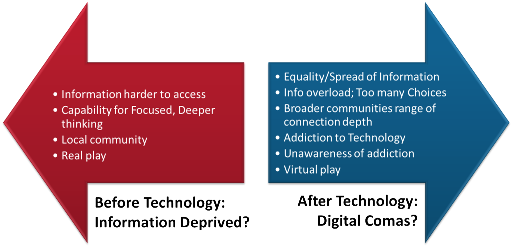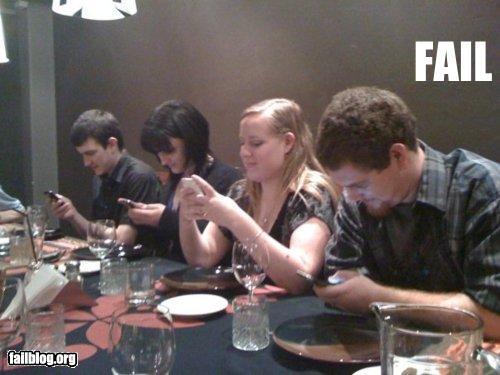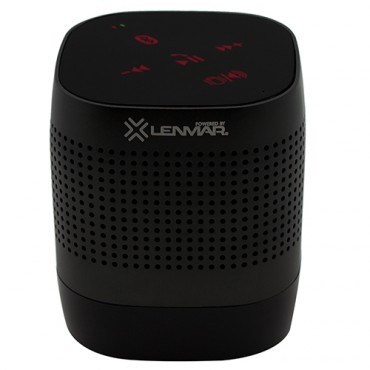A handful of young hackers looked up from their laptops when Jorge Soto burst into the upstairs office they shared in an old Mexico City house one morning last spring. Soto wanted to be sure they'd seen the front-page headline then flying across Twitter: Mexico's congress was set to spend 115 million pesos (then US $9.3 million) on a mobile app that would let 500 lawmakers track legislative affairs from their cellphones -- more than a hundred times what such software could cost.
To many in Mexico, what became known as the "millionaire's app" was just the latest in an old story of bloated state spending; but Soto and his colleagues saw a chance to push a new approach instead. In two days, they'd covered their white office walls with ideas for a cheaper alternative and launched an online
contest that drew input from more than 150 software developers and designers, producing five open-source options in two weeks.
Lawmakers soon
insisted they'd never known about the original app, which had been quietly approved by a legislative administrative board; and a congressional spokesman
rushed to clarify that the project had been suspended. Invited to pitch their
alternatives to Congress, a half-dozen young coders took the podium in a sloping auditorium at the legislature. The only cost for their work: a 11,500-peso (then US $930) prize for the winner.
"We didn't just 'angry tweet,' we actually did something," Soto, a 28-year-old IT engineer and social entrepreneur, said at the time. "Citizens need to understand democracy beyond voting every few years, and government needs to understand that we're willing to participate."
Seven months later, Mexico's president appears to have heard them, hiring Soto and nine others to launch one of the world's first federal civic innovation offices, part of a broader national digital agenda to be formally unveiled today [Monday, 11/25, 1PM ET]. Building on a model pioneered in a handful of U.S. cities since 2010, Mexico's civic innovation team aims to integrate so-called "civic hackers" with policy experts already inside government -- to not only build better technology, but to seed a more tech-minded approach to problem-solving across federal processes and policy. What began as outside activism is slowly starting to creep into government.
Long considered a dry topic by many citizens, government IT has popped to life in recent headlines, with news of the NSA's vast surveillance machine on one hand highlighting the United States' imposing tech prowess, even as its botched launch of HealthCare.gov exposes severe problems in the way that government buys and builds software. That paradox echoes around the globe: While governments may spend heavily on high-tech intelligence and security programs, most are still struggling to update the unwieldy IT systems that run almost everything else.
Mexico's app incident reflects a common problem in that process: wasteful spending by non-techie bureaucrats who don't seem to know what they're buying -- at best, out-of-touch; at worst, party to crony contracting; and overseen, if at all, by officials even less tech-savvy than themselves. Citizens, in contrast, are adopting new technologies faster than much of the public sector, growing the gap between the efficiency and accountability that they expect as private consumers, and the bureaucratic, buggy experience that government still provides.
To break that cycle, a movement of community-minded "civic hackers" like Soto has stepped into the void, offering their own low-cost tools to make government more efficient, collaborative and transparent. In recent years, thousands of developers and designers have met to build civic-aimed software at weekend hackathons or casual coding nights across the
U.S. and
Europe; and similar networks are now cropping up across Latin America, Africa and Asia - part of a twin push for more democratic and more digital societies. Latin America's increasingly stable, middle-class democracies, including Mexico, Chile and Brazil, have seen a particular surge in events like
Desarrollando America Latina,
Campus Party and
ABRE LATAM, which convene coders to address issues including crime, education, pollution and public health. For-profit brands sponsor contests like Brazilian mobile-phone provider Vivo's
Smart City challenge, and philanthropies including the Avina Foundation have
called for tech projects that boost civic participation. The resulting apps have done things like map crime to spot trends, let parents rate and compare schools, and help citizens recycle, report pollution or avoid traffic.
Their efforts illustrate an alternate definition of the term "hacker" that's common in tech circles: not a sinister saboteur, but a problem-solving programmer who finds creative ways around obstacles. Skipping slow social-science research and long product cycles, civic hackers favor an action-oriented, agile approach to software development that allows them to build, release and continuously refine their work. And because they believe in using open-source code -- free, public and infinitely alterable -- their output isn't meant to be final, but perfected over time by the community; not to mention retooled for use by other public offices, potentially saving millions now spent on redundant projects across jurisdictions.
Civic Hacktivism Most civic hacking still takes form as outside activism, using the power of example to show officials and citizens how government might change its approach to technology. Around the world, some agencies are starting to pay attention -- not only accepting civic hacking as a new avenue of citizen engagement, but as a potential source of new tools. Many public offices now hold their own hackathons, including the
White House, which in June hosted one of nearly 100 events marking the first "
National Day of Civic Hacking" in the U.S. Since Washington D.C. launched its initial
Apps for Democracy contest in 2008, similar events have mushroomed in big and small cities across the U.S.; federally, they've spread from
NASA and the Department of
Health and Human Services to the
Environmental Protection Agency,
Labor Department, and
Veterans' Affairs - in part through
Challenge.gov, a platform designed to help government agencies host innovation contests to tap the public for new ideas. The State Department, well-known for its paradigm-shifting approach to "
21st century statecraft," including digital training camps for global NGOs and public diplomacy through social media, is also reaching out to civic hackers through coding contests, for example with
USAID's 2012 "
Hack for Hunger" and a joint U.S./Russia
codeathon that saw programmers in D.C. and Moscow build tools to track crime, legislation, and public contracts in 2011.
Globally, the World Bank has played a catalyzing role, not only hosting worldwide
water- and
sanitation-themed contests, but seeding the model in Latin America specifically, for example coordinating infrastructure -- and health-themed hackathons in
Colombia, a challenge to fight domestic violence in
Central America, and key
events around disaster relief -- even using winning apps to locate missing people after 2010 earthquakes in Haiti and Chile. Government agencies in
Brazil and
Chile have held their own national app contests, including a
hackathon launched by Brazil's congress last month to source legislative transparency tools in the wake of anti-government protests earlier this year. In Mexico, the national tax agency this summer asked Soto and his colleagues to run an
open call for an app to improve tax collection and service; while cities from
Buenos Aires to
Rio de Janeiro to
Mexico City have convened coders at a host of more general local contests, too.
Still, hackathons have limitations: Given their experimental, brainstorm-and-build-it nature, they produce more focused prototypes than systemic proposals -- drawing fire for spreading the "solutionist" illusion that cool apps can cure complex governance problems. In the rush to build something, coders can often fail to understand or address the context and roots of problems at hand; and without input from policy experts who've spent years studying complex issues like poverty, education or crime, they can end up producing simplistic or flashy tools that are divorced from real needs. That gap can be especially acute in emerging economies: an app to report potholes, for example, may be of little value in a place where roads aren't paved or few people own smartphones or cars.
Yet the speed, small scale, and low cost with which hackers build things can also slash the stakes for failure, freeing government to try new ways of delivering services and engaging citizens, reshaping its attitude toward risk and innovation. "An iPhone app isn't going to change structural problems in democracy," so civic hackers often focus on improving basic public services instead, said David Sasaki, an expert in open government and technology for the Omidyar Network in Latin America. It's not always about the actual apps built as much as it's about showing what's possible: "It's highly symbolic," Sasaki said. "It's about changing the mentality within government."
Civic hackathons can change the mentality outside government, too, creating new communities of techies who may've never thought about public service, but now find it full of interesting challenges. In that, civic hacking is part of a broader, emerging "civic tech" movement, which draws on crowdsourcing principles of community-based problem-solving. It can be seen as the latest incarnation of digital democracy: If "e-government" started to push public services online in the late 1990s, and "e-participation" engaged voters and officials in a more direct dialogue in the 2000s, civic tech is now moving from communication to collaboration, recruiting citizens not only to advocate but to build alternative solutions. While David Cameron's "
Big Society" program in part sought such collaboration as way to cut public spending in the U.K., U.S. and Latin American officials seem intent on using it to source new ideas.
Innovation Infrastructure To institutionalize that input, cities from
Boston and Philadelphia to Buenos Aires and Mexico City are building an innovation infrastructure, opening civic tech offices that often partner with the community to identify, build and test new approaches -- not only working with civic hackers, but sometimes hiring them into permanent roles. Fellowship programs can seem a safe way to start: Nonprofit Code for America has joined with dozens of U.S. cities since 2011, sending tech teams into town on one-year fellowships to devise and disseminate easy-to-use tools, in the process training a new crop of civic hackers who could make careers in the public sector. Code for America founder Jen Pahlka, now a deputy U.S. CTO, coordinates a Presidential Innovation Fellowship, which draws developers and entrepreneurs to tackle specific projects across the federal government. Her organization has meanwhile helped to spread the model internationally,
working with Mexico City's new
Laboratorio para la Ciudad to launch a local fellowship last May. A division of Jamaica's Agriculture Ministry did the same, partnering with the regional program
Code for the Caribbean; and Buenos Aires consulted with Code for America when
staffing up its own
civic innovation lab to incubate projects hatched at local hackathons.
In contrast to the broader innovation offices that some governments are opening to promote economic growth through traditional tech entrepreneurship, these specifically "civic" innovation offices are the first to focus explicitly on the relationship between technology, citizen engagement, and public services. Soto's team, for example, is part of a larger presidential office on national digital strategy, Mexico's first, which also includes groups dedicated to e-government and digital communication. Founder and coordinator Alejandra Lagunes, a former Google Mexico director who ran President Enrique Peña Nieto's digital campaign in 2012, brought the idea into the administration, which promised in a key inaugural
agreement to implement the country's first open-data and e-government strategy, betting that a more transparent and efficient government would boost economic growth and investment, too.
Yet some experts warn that having separate innovation offices can risk siloing change, when what really spreads new ideas throughout government are direct personal relationships across agencies, an April
study by the New America Foundation's California Civic Innovation Project found. Many civic innovation teams also focus on finding new forms of public engagement, when a more lasting transformation may require rebuilding internal tools and processes instead. But that's a tall order: Software built by small experimental offices or volunteer techies will never be as complex or secure as would be needed for a massive government project like HealthCare.gov. And even if civic hackers had access to resources for such complicated work, they'd face an uphill battle navigating the arcane procurement systems that can prevent governments from using small vendors or volunteer labor.
That's why for Soto, it's about striking a balance: bringing civic hackers onto teams with issue experts across government to address specific needs, demonstrating a new approach as well as its impact, which may in time be more likely to change process and policy. "We could never build a HealthCare.gov with a hackathon. But with the office we're building, that's exactly the point: to create high-impact projects that lead to something more," he said this month from his new desk in Mexico City's leafy Condesa neighborhood. "Success isn't launching 120 apps. Success is actually changing a process inside government forever," so that the next HealthCare.gov-like debacle never happens.
Open Data That shift will require sharing not just best practices, but data, across government. For that reason, Mexico's civic innovation team is drafting a national open data policy and building an open data
portal, pushing federal and state offices to share information across jurisdictions, as well as with citizens. Though a founding member of the global
Open Government Partnership, Mexico has been slow to issue open data regulations; even now, Soto's team is taking a gradual approach, polling members of the public to see what kind of information they want to see made available first, rather than releasing thousands of datasets unprompted.
Open data, and the belief that troves of government information should be accessible to citizens, is in fact key to the civic tech movement. From budget and fundraising figures, to the census, transit, or public safety stats that coders use to build apps mapping traffic and crime, public data are the building blocks of civic tech: More than transparency for transparency's sake, they allow citizens to build tools that can not only hold government accountable, but make it more efficient. Since the U.S. enacted its milestone Freedom of Information Act in 1966, watchdog groups like the D.C.-based Sunlight Foundation have modernized the push for open government, crafting new roles for the public in mining information once it's released. A key argument is economic: give citizens access to data, and they can build businesses around it, just as weather and GPS industries blossomed after federal satellite data were released. A 2013
White House Executive Order promotes that kind of collaboration, making federal data open by default specifically so entrepreneurs can build businesses around it. To an extent, that link between open data and economic growth can give advocates and officials a common cause.
Yet transparency groups and governments have had a different and arguably more antagonistic relationship in Latin America than in the U.S. Born amid the wave of democratizations that swept the region in the 1980s and 1990s, local transparency efforts at first focused on exposing human rights abuses by recent military governments -- a tough task that often left each side slower to trust the other, complicating efforts to work together on new issues. Some transparency groups have embraced a broader purpose, though, with organizations like Mexico's
Fundar and Chile's
Cuidadano Inteligente not only pressing for a wider range of data to be released, but recruiting techies to make sense of that data and put it to wider use. In that, civic hackers may help to further align interests: on one hand, they transform jumbled information into new tools for activists to hold governments accountable; on the other, they translate it into usable data sets for citizens, businesses, and even governments --essentially recognizing that transparency is not just about truth, but performance.
"Open data combats what are probably our two biggest problems: corruption and inefficiency," said Rodrigo Gallegos, director of sustainability and technology at the Mexican Institute for Competitiveness, a Mexico City think tank. "Governments learn a lot when they open data and society is able to manipulate it in a creative way to find solutions or patterns. There's a huge opportunity."
Digital Divide To realize that potential, though, Latin America's civic tech infrastructure needs to grow -- a question of resources as much as of interest. A gaping digital divide still limits the degree to which technology can be an avenue of civic participation, just as it limits the degree to which tech can drive economic growth. Mexico, for example, is home to one of the region's biggest tech sectors, but just 38 percent of people have Internet access, according to the
U.N; and though mobile penetration neared 87 percent last year, high service costs have at times made civil society reluctant to use text messaging to engage citizens, a 2011
report for the D.C.-based New Policy Institute found.
Still, infrastructure investments are narrowing the gap; and telecom reforms are expected to boost competition and slash prices, increasing digital participation. The Mexican president's new digital agenda broadly aims to close the divide and put technology to new use in public safety, education and healthcare, investing in growing a digital economy. Latin America in general is already home to some of the world's most avid social media users, with Brazil and Mexico respectively boasting the world's fourth- and fifth-biggest groups of active
Twitter users last year, and third- and fifth-biggest groups of
Facebook users - many of whom put those platforms to civic use. In one early example, Mexicans tweeting around the 2009 #InternetNecesario campaign drew enough attention to kill a proposed 3 percent luxury tax on internet fees; today, many don't just use Twitter to lobby government, but to fill in where it has failed them, for example creating city-specific hashtags to warn one another of shootings and drug violence in places where cartel threats can deter police and journalists -- a trend
explored by Microsoft Research.
Long before they were invited into government, Mexican civic techies built specific mobile tools to transmit everything from top-down hurricane alerts; to two-way crime reports based on citizen tips; to bottom-up election-monitoring tips, with voters submitting cases of suspected fraud. One key platform, Cuidemos el Voto ("Protect the Vote"), drew so many tips during Mexico's 2009 congressional race that the federal electoral crime office asked to use it, said co-founder Oscar Salazar, a startup veteran who worked with Soto in 2011 to launch Citivox, a dashboard that aggregates citizens' digital complaints. In the beginning, "it's about creating apps where citizens can engage as a community, improve their lives and gather a critical mass, so that government starts realizing something is happening. Then government engages," Salazar said.
As those efforts start to fuel demand for civic tech, governments can help to fuel supply by growing the pool of qualified coders. Though its public IT investments
sharply lag stated goals, Mexico has still
sent billions of pesos (hundreds of millions of dollars) to foster local software and ICT clusters and counts some 600,000 IT employees, with more than that number of
students enrolled in engineering and technology programs. The question remains, though, how many among this new generation of techies will trade time at an IT giant or in the region's budding startup scene to work on civic projects. "We don't have a lack of talent; it's just focused on a different set of problems - they're trying to build for the consumer web, to build the next Twitter or Facebook, instead of looking out the window and seeing the real problems we have," said Rodolfo Wilhelmy, one of the hackers behind Mexico's "millionaire's app" contest, who now works with Soto as director of open data for the president's civic innovation team.
Codeando Mexico Wilhemy should know: Three years ago, he'd never heard of civic tech. Then a 25-year-old IT grad from the prestigious Tecnologico de Monterrey, he'd been building iPhone and Blackberry apps for his own startup and another local venture, cranking out everything from newsreader and e-commerce software to a Foursquare/Facebook mashup that helped people find the nearest taco stand. "After a while, I just said to myself, 'What am I doing - writing software for a brand, or should I work on something of real impact?'" he recalled. When friends asked him to join Mexico's first civic
hackathon in 2011, their team won with a tool that shared public data on crime and schools. He recalls meeting U.N. officials and U.S. civic startup stars at that event; soon after, he started doing work for co-hosts Soto and Salazar at Citivox, and attending every civic hackathon he could.
It wasn't long before Wilhemy spotted that key flaw of civic-tech solutionism in action: coders at those events often built novelty apps that failed to address real needs. Late last year, he and a few other Mexican startup vets sought a fix, creating an online platform where NGOs or government agencies can describe specific problems for hackers to browse and then team up to solve - framing relevant issues from the start. The platform, named Codeando Mexico, has since hosted more than
30 civic-themed challenges.
With Soto as an advisor, the team seized on the scandal surrounding the "millionare's app" to formally launch in March, calling for help "
taking down the Mexican tech mafia" - a play on the big, slow software makers that dominate public contracting around the world. In that, Codeando Mexico tackled a central civic-tech target: procurement, widely considered one of the public spheres ripest for reform. Its goal, according to Wilhelmy, was to replace clueless or "compadrismo" crony contracting with micro-procurement, swapping traditional suppliers for leaner teams of open-source coders who can release and revise what they build in near real-time. "It's like the Robin Hood of procurement: You take money that's being spent on big projects and bring it to the developer community, giving them an opportunity to work on stuff that matters," he said. "There's a whole taboo around software: government thinks it has to be expensive. We're sending a message that there are different ways to do this; it shouldn't cost so much."
The maker of the costly congressional app in question, Mexico City consultancy
Pulso Legislativo,
insisted last spring that its hefty price tag didn't reflect its software as much as the aggregated data and analysis behind it. But critics were quick to note that Mexican lawmakers already had access to similar data compiled by at least five publicly-funded
research centers - not to mention from INFOPAL, a congressional stats system with its own
mobile application. With Mexico then in the midst of a contentious
telecom reform, the public may've been especially primed to pounce on any hint of corruption or wasteful IT spending. Codeando Mexico saw an opening.
So it was that a crew of young coders, almost all under 23-years-old, traipsed into the legislature, a motley mix of suits and skinny jeans, one-by-one pitching a panel of judges that included the head of the congressional Science and Technology Committee. Drawing on public data culled by local transparency groups, their Android and iOS apps - including the winner, "
Diputados" -- allowed citizens to track and opine on pending bills and to map and contact their representatives -- still a relatively new concept in Mexico's young democracy.
"People often think we're lazy, because we haven't had the capacity to be transparent, to reply in real time or according to other characteristics of the apps we saw today; we haven't had the capacity to respond to the citizen," committee chair and congressman Ruben Felix Hays said in remarks reflecting on the event. "It's clear we have to change the paradigm we've been working with in congress."
Maybe with a push from a small new civic innovation team inside the president's office, they will.
 Or when you turn off the device? This generation is full of cerebral connections and yet, there's a question of depth, personality, multi-sensorial development that remains unanswered. Motivational speakers, coaches, and HR professionals are constantly talking about generational differences - it's the hot buzzword of the moment - Gen Y, Millenials, The Me Generation. They are all emphasizing the wrong thing.
Or when you turn off the device? This generation is full of cerebral connections and yet, there's a question of depth, personality, multi-sensorial development that remains unanswered. Motivational speakers, coaches, and HR professionals are constantly talking about generational differences - it's the hot buzzword of the moment - Gen Y, Millenials, The Me Generation. They are all emphasizing the wrong thing.

















